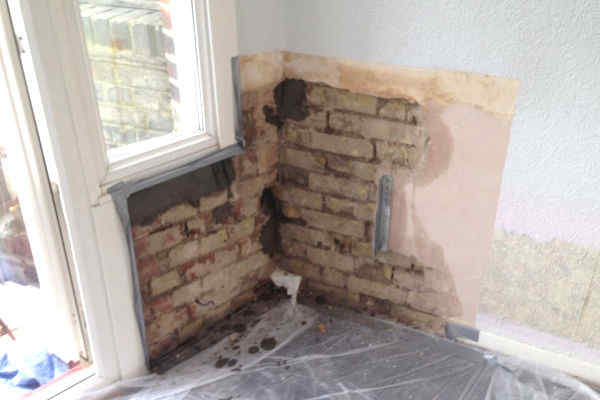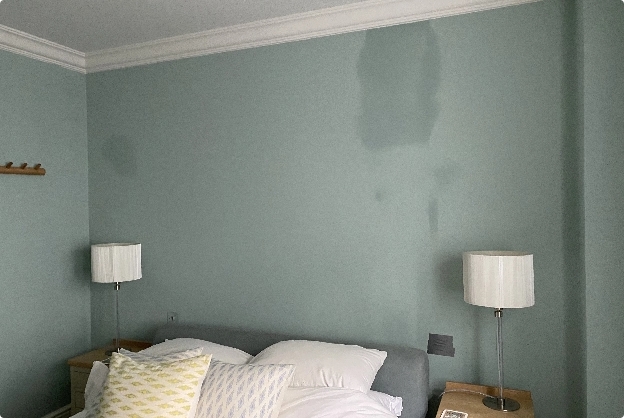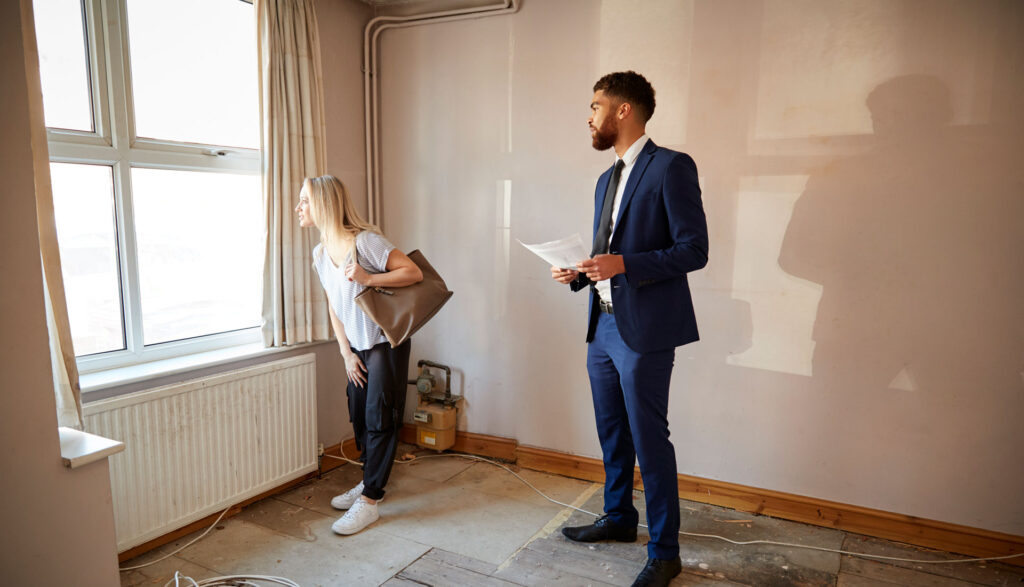Top 10 FAQs About Damp Problems
Here are the top 10 frequently asked questions about damp problems, answered by us, the experts!
-
What are the main causes of damp in homes?
The most common causes of dampness in homes are rising damp, penetrating damp and condensation. Rising damp happens when moisture from the ground rises up into walls and floors due to capillary action in bricks and mortar. Penetrating damp occurs when water seeps in through cracks, leaky plumbing, windows or faulty flashing. Condensation arises when warm moist air meets a cold surface like windows or exterior walls, causing water droplets to form. Correct identification of the damp type is crucial for effective treatment.
-
How can you tell if you have rising damp?
Telltale signs of rising damp are a ‘tide mark’ of staining on walls up to 1 meter above the floor, salt deposits or crumbling plaster at the affected base. Moisture meter readings will be high at the base but gradually reduce higher up.
-
What’s the best way to treat rising damp?
Installing a new chemical DPC injection to form an effective horizontal moisture barrier in walls is most effective. The damp plaster should be removed to at least 300mm above stained areas, before replastering. Correct preparation is vital for the DPC treatment to work properly.
-
How can you prevent penetrating damp?
Early inspection and maintenance helps minimise penetrating damp issues. Check for cracks in walls or damaged brickwork, and clear vegetation close to walls. Ensure there is proper flashing around windows, chimneys and vents. Fix leaky plumbing and seals around openings. Consider re-pointing old mortar joints and applying water-repellent coatings externally. Good ventilation in cavities also helps.
-
What causes condensation damp?
Condensation happens when moist air contacts cold surfaces. It’s worse in poorly insulated, badly ventilated rooms. Excess moisture from cooking, bathing, breathing, etc. builds up indoors. When it makes contact with cold walls, windows, ceilings or corners, condensation occurs. It causes dampness, mould growth and potential health issues if unchecked.
-
How do you treat severe mould due to condensation?
For severe mould, combine thorough cleaning with deep-cleaning products and fungicidal washes. Improve air circulation and ventilation. Insulate cold surfaces to keep them warmer. Limit moisture sources through lids on cooking pots or better bathroom ventilation. Dehumidifiers can help control moisture levels. Avoid drying clothes indoors on radiators. Long term solutions include insulation, double glazing, extractor fans and regular window opening.
-
What are black mould spots a sign of?
Black spot mould often first appears in corners, under windows, in closets and bathrooms. The dark spots indicate excess moisture and stagnant air which allows mould colonies to develop. Condensation is the main cause, but water leaks and rising damp can also contribute.
-
How can you test dampness levels at home?
A moisture meter can give objective readings of dampness in walls and floors. Take readings outside the affected area for comparison. Another option is to tape a 20x20cm square of tin foil tightly on a wall. After 24 hours, check underneath – any moisture or condensation indicates a damp problem. Dampness may be obvious visually via stains but taking measurements can gauge the extent and distribution.
-
When do you need professional help with damp?
Bring in damp specialists if you have persistent, recurring or worsening damp, if it’s in hidden areas you can’t access, if the cause is unclear, or if initial efforts haven’t resolved it. They have the expertise and equipment to fully diagnose causes, assess if structural issues are involved, and advise on the most suitable solutions. Tackling complex, long-term damp requires their skills.
-
How can damp problems be prevented?
Good ventilation, insulation, moisture control and prompt repairs help minimise dampness.
- Install a DPC when building or renovating
- Use humidity-resistant materials
- Avoid drying laundry indoors
- Vent kitchens and bathrooms properly
- Insulate walls and ceilings
- Seal cracks and clear gutters promptly
- Get drainage systems checked regularly
Adopting a proactive approach prevents major damp issues arising later.
Call us if you have damp in your property.


